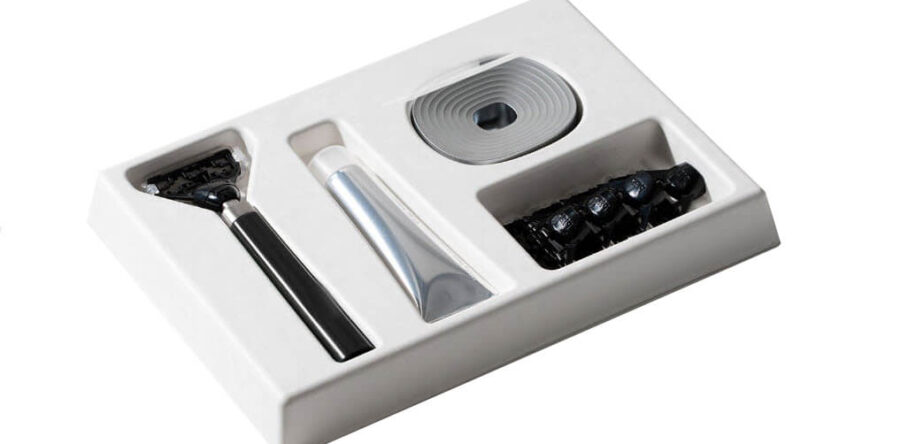Custom Molded Pulp for Small Electronic Components

Since their invention in the 30s, custom molded pulp, also referred to as molded fiber, has been the most favorite option for making sustainable packaging solutions. After the 70s, however, there was a steep decline in the utilization of molded pulp packaging owing to the introduction of plastic foam packaging. Recently, with an increasing call to eco-protection, leading professionals and industries have taken up sustainable packaging solutions in order to conserve the environment. Molded packaging is made from natural resources like plant fibers, boxes, and recycled paper, and these days it is the go-to option for the shipping of fragile gadgets and other goods. It is also used as an edge protector or pallet for handling or shipping applications.
Custom Molded Packaging
Not only is custom molded pulp packaging robust, but it’s also suitable for shipping electronics, glasses, and medical devices. Experts recommend coated molded packaging in order to prevent damage by static or dust abrasion.
For companies looking to protect the environment, molded pulp packaging is the solution. While sustainable packaging is primarily used as packaging, it has also found use across many industries. Many businesses essentially use plastic for a large number of processes that will benefit from making the switch to environmentally-friendly packaging solutions such as compostable pulp.
Electronics Packaging Designs
The best example of custom-molded pulp in use is egg trays used in egg transport or berry baskets that you see at the farm stands.
Pulp packaging only needs recycled paper and water to make molded pulp.
There are no added chemicals or byproducts, and thus molded packaging is entirely biodegradable, and is therefore in the category of environmentally friendly electronics packaging materials.
Does Packaging Contribute to Environmental Degradation?
Because electronic products are more fragile than most other products, they benefit from the extra protection offered by molded packaging.
Typically, most companies utilize cardboard, paperboard boxes, or clamshells to pack electronic gadgets. If they produce more gadgets, the demand for molded packaging to ship these products increases. However, each day there are new inventions, each better than the last, saturating the market with electronic products made to occupy a specific niche.
The common denominator with all electronic gadgets is that they all ship in various dimensions and forms.
Afterward, what happens to the packaging it came with depends on the person, or the device. But most people toss it in the bin anyway.
What Can Retailers Do to Reduce Packaging Waste?
Right from the assembly line, the leading objective should be finding ways to make the cycle eco-friendly, or revamping the design of the electronic packaging.
Below is a list of sustainable packaging raw materials:
- Biodegradable packing peanuts
- Cornstarch packaging
- Geami
- Green Cell Foam
- Molded Pulp
- Mycelium and hemp packaging
- Paper Tape
- Recycled cardboard and wrapping sheets
Thereafter, you can work to reduce the number of packaging components.
An ideal scenario would be switching to custom molded pulp since it’s biodegradable, recyclable, and easily repurposed when worn out, and doesn’t affect the environment. Taken further, sustainable packaging should be aimed at reducing the amount of packaging used.
Whilst there are some bare minimum requirements to protect shipped goods, there are additional ways that are easy to implement, aimed at reducing the volume of packaging material. However, this ultimately hinges on the electronic gadget at hand.
Plastics as Electronics Packaging
Plastic clamshell packaging is among the most popular packaging for electronics and fragile goods. Even though this packaging comes at a throw-away price, plastics cause the most damage to the environment than most materials.
For example, it takes up to 1,000 years for plastic to decompose, and the damage is compounded by the fact that there are plastics thrown out daily.
Some plastics are biodegradable but even these are hazardous. During the process of degradation, they release chemicals that seep through the soil and into the water, influenced by the location they are decomposing.
Consequently, you will have to make sure that you are looking to protect not only your shipped goods from the retail store to clients but also the environment you live in.
Sustainable Packaging Solutions for The Future
Plainly put, custom molded pulp is eco-friendly and promotes the protection of natural resources.
The Sustainable Packaging Coalition (SPC) mandates the checklist below be used to pass packaging as sustainable:
- Clean production technologies and best practices are upheld in manufacturing.
- Gives optimum performance for the cost.
- Is effectively recovered and utilized in biological and/or industrial closed-loop cycles.
- Is efficiently manufactured using sustainable or recyclable resources.
- Is made from non-toxic materials throughout the cycles.
- Makes the best use of energy and materials.
- Raw materials are sourced, transported, and recycled using renewable energy.
- Throughout its life cycle, is beneficial, healthy & safe for communities and individuals.
